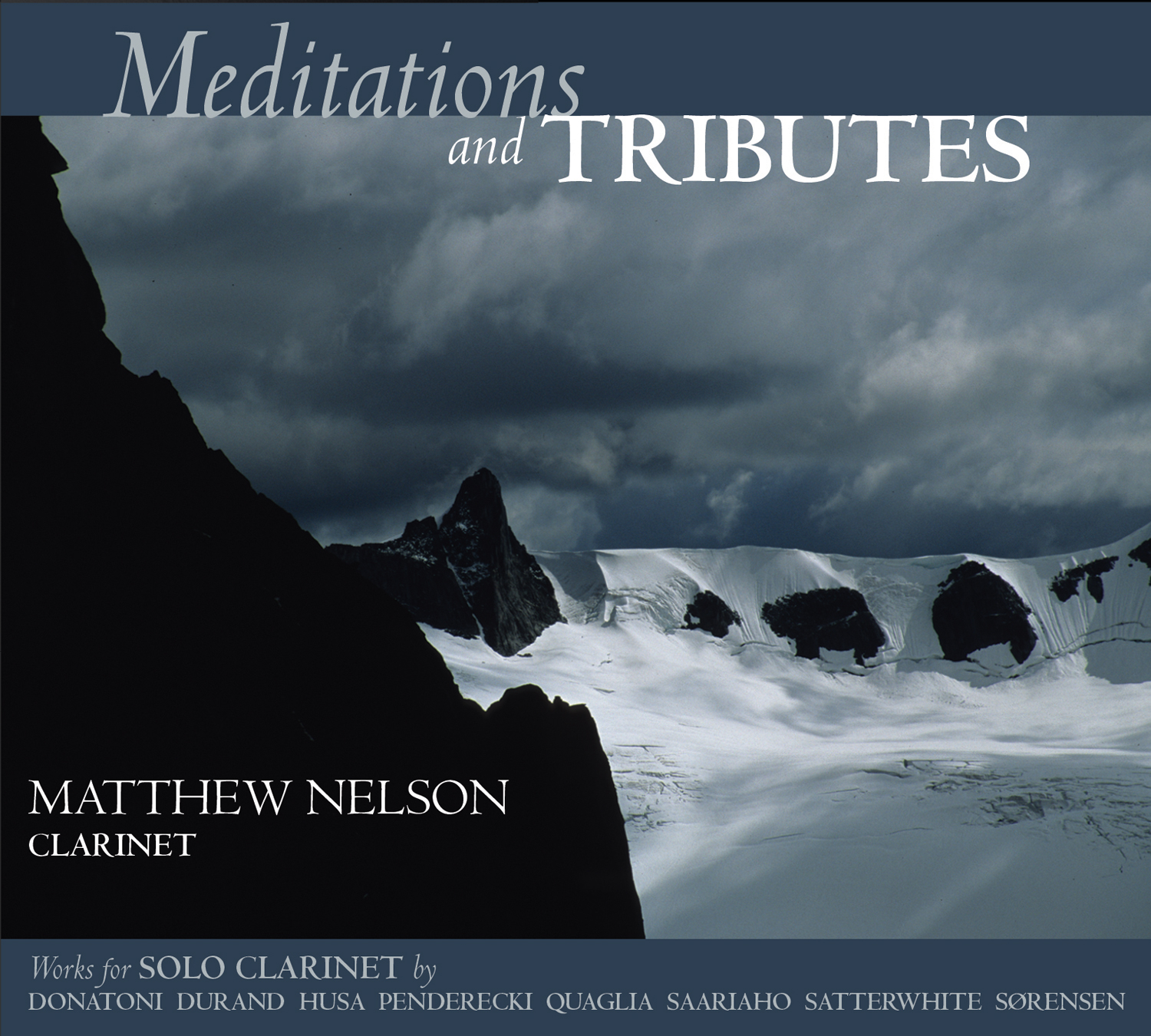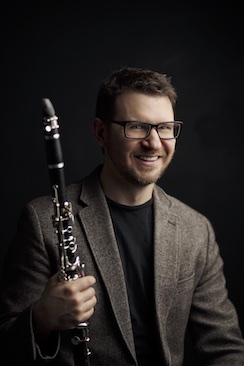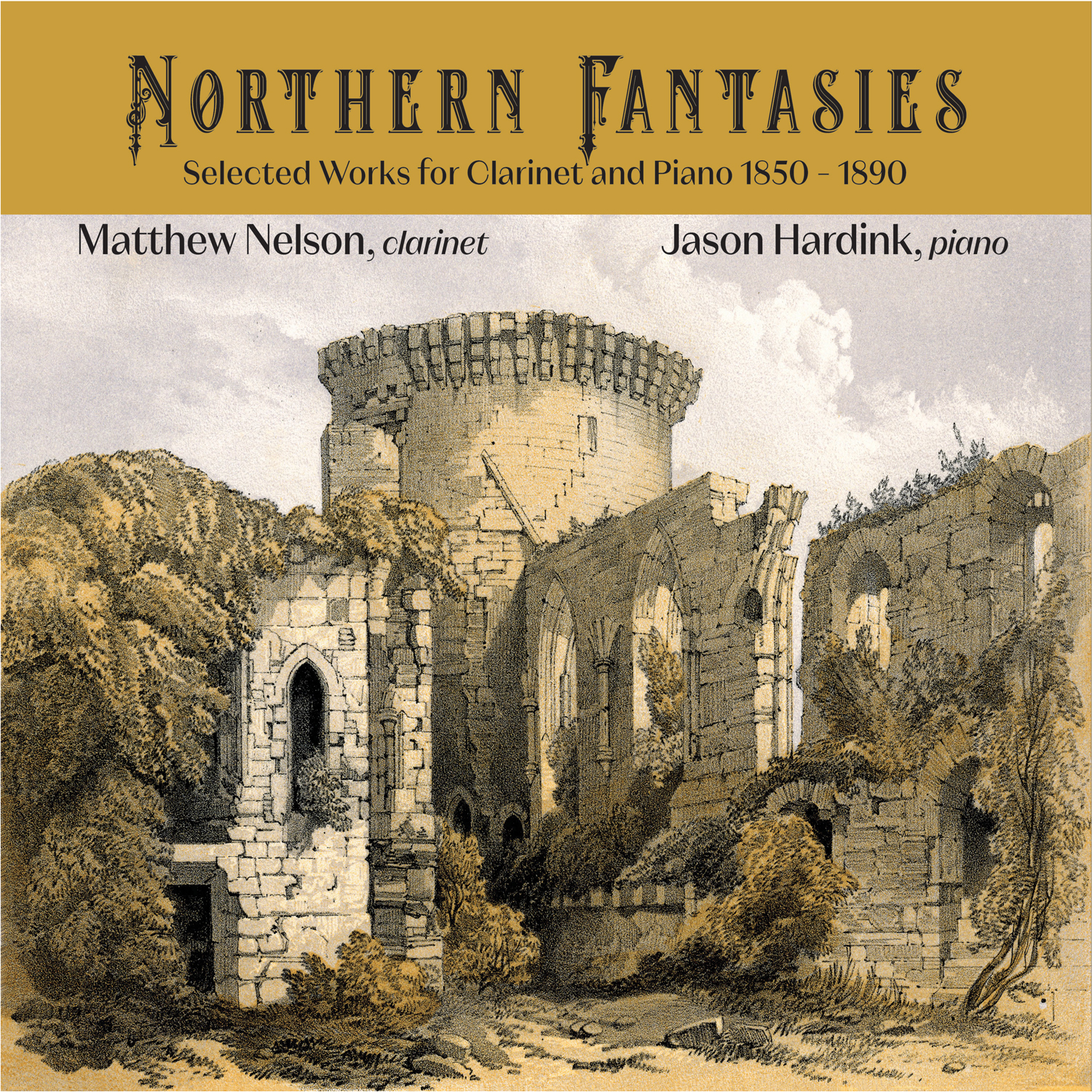Duft - Kaija Saariaho
Kaija Saariaho composed Duft in 2011 on a commission from the Ernst von Siemens Musikstiftung for the Internationaler Klarinettenwettbewerb Freiburg 2012. The German title "Duft" translates to "fragrance," and each of the movements relates to essential states of this overarching theme: I. Blütenstaub (Pollen), II. Blühend (In Bloom), and III. Flüchtig (Fleetingly). She has described Duft as an "intimate" work and an "expressive monologue." Saariaho creates novel tone colors with extended techniques in each of the three movements: Blütenstaub employs low percussive tremolos, flutters, multiphonics, wide vibrato, microtones, and glissandi, Blühend incorporates improvised grace notes through tremolos, and Flüchtig expands on those colors with increased range and dynamics in the wide vibrato, flutters, and extended glissandi. Nevertheless, she grounds the entire work in expressive melodic material, and the effects always serve the line.
Matthew Nelson
La mesure des choses: I. La mesure de l’air - Joël-François Durand
La mesure des choses I. La mesure de l’air for solo clarinet belongs to a group of four pieces for solo instruments, to be played either in succession in the same concert, or separately. The other works are for piano solo, oboe and viola, and for percussion. The original conception for this set is based on Heraclitus cosmogony, which includes transformations of one element (air-sea-earth-fire, with the addition of time) into each other. My reflexion on these transformations led me to interpret these natural elements in their relation to human experience: in the case of this work, the air is a representation of the present, what goes continually through the human body, barely perceptible yet always in changing motion, like the immediate passage of time: it is the present in the human consciousness. In La mesure de l’air, a number of melodic models - archetypes - are constantly transformed, their rhythmic and intervallic contents being altered every time they come back. The texture of the piece is therefore often changing, but the main activity is one of a febrile, creative activity renewing itself unceasingly. La mesure de l’air was a commission of the Festival "Musica," Strasbourg, and was premiered at Musica by Armand Angster 18 September 1993.
Joël-François Durand
Tiodhlac - Joël-François Durand
Tiodhlac is the Scottish Gaelic word for "gift." It was written as a tribute to James Dillon, for a concert commemorating his 50th birthday. It was premiered at the Warehouse, London, UK by Roger Heaton 4 October 2001.
Joël-François Durand
Clair - Franco Donatoni
Franco Donatoni resolved to quit composing toward the end of the 1970s, finding himself unable to bear the act of notating his increasingly monstrous orchestral works. But an outstanding commission for the Accademia Musicale Chigiana prompted the reluctant composer to write Ash, a chamber work for eight players. The clarity and differentiation of the lines in Ash set him on a path toward recovery from his compositional impasse, though his fundamental approach to the transformative generation of material would not change.
Donatoni composed Clair, a set of two pieces for clarinetist Giuseppe Garbarino, in 1980, as he was writing a number of other solo instrumental works in the years immediately following Ash. Clair’s two pieces typify Donatoni’s process of transitional figuration, with sectional "blocks" or "panels" of material varied by substitution/elimination/etc., yet unified by the searing intensity of his broadly projected thematic elements. Though both pieces in Clair share this approach, they diverge dramatically in character. The first piece inhabits a pervasively loud and figured sound space, replete with rapid wide intervals, fantastical leaps, flurries of mordents/inverted mordents, syncopations, and glissandi. Its range reaches the upper and lower limits of the clarinet, even venturing to the sounding low D-flat/C-sharp only accessible on a full Boehm system clarinet (relatively common in mid-20th Century Italy). In stark contrast, the second piece begins at the limit of audibility, cycling through tight rapid cells in the chalumeau. The very quiet dynamic is maintained throughout most of the piece, interrupted only occasionally by more aggressive outbursts.
Matthew Nelson
After Milton: Three Vignettes for B-flat Clarinet - Bruce Quaglia
After Milton: Three Vignettes for B-flat Clarinet was composed for the Italian clarinetist Arianna Tieghi and is dedicated in Memoriam to American composer Milton Babbitt (1916 - 2011), a leading figure in post-war American music and a mentor to numerous generations of younger American composers. Babbitt’s solo clarinet work My Ends are My Beginnings provides some of the source material for the present work, but the Vignettes are neither a set of variations nor a re-composition of that earlier piece; instead they are a meditation upon the expansive world of possibilities that Babbitt’s music inhabited.
Bruce Quaglia
Songs of the Decaying Garden - Bent Sørensen
Bent Sørensen originally composed Songs of the Decaying Garden in 1986 under the title Impromptu for the Lerchenborg Workshop. Initially a self-taught composer, he had begun formal studies with Nørholm in 1983, and, having completed his studies with Nørholm and Nørgård by 1990, Sørensen made substantial revisions to this clarinet work in 1992 in conjunction with clarinetist John Kruse’s premiere recording. It was at this point that he changed the title to its present form. Erik Jakobsen notes "Sørensen’s fascination with the disintegration and degeneration of the manifestations of life," from which the Songs of the Decaying Garden seems to take its inspiration. The work’s three movements reflect this sense of dissolution while maintaining impressive depth and lyricism. Sørensen employs subtle but nearly constant dynamic shifts alongside microtones, nested rhythms, rapid staccato notes, glissandi, and flutters, creating a layered sonic texture that recalls the soundscape of the New Complexity movement.
Matthew Nelson
For Dallas - Marc Satterwhite
Dallas Tidwell was a longtime friend and colleague. He played clarinet for many years in the Louisville Orchestra and was the clarinet professor at the University of Louisville, where I have taught since 1994, for a long time as well. Besides music, we shared a passion for cooking, and we made meals for each other on many occasions. Dallas was a good friend to composers, commissioning, performing and recording a number of pieces, including several of mine, most notably Passagework, a cycle for voice, clarinet and piano which he performed with his wife, soprano Edith Davis Tidwell. Dallas died in May of 2015, at the age of 64, after a battle with cancer that lasted several years. His family, friends, colleagues, students, and admirers of his musicianship were deprived of his presence much too soon.
This work explores the entire range of the clarinet, and also requires a huge dynamic range and the ability to negotiate sudden changes in mood. It aims to portray many of the emotions we experience in times of loss, from rage to resignation. It is part of a series of short pieces in recent years dedicated to the memories of several friends and colleagues as well as two of my former teachers. Some of them share the opening motive of this piece and the same flexible approach to rhythm. They all explore the wide pitch and dynamic ranges required by For Dallas, and the same kaleidoscopic mood shifts.
Marc Satterwhite
Three Studies for Solo Clarinet - Karel Husa
Czech-American composer Karel Husa wrote Three Studies for Solo Clarinet for the 60th Prague Spring International Music Competition in 2008, dedicating the work to Professor Jirí Hlavác for his 60th birthday. Husa notes in the score that the "three contrasting and virtuoso parts - Mountain Bird, Poignant Song and Relentless Machine - progressively represent three different characteristics of playing: espressivo, legato and staccato." Mountain Bird initiates the piece with a ringing invocation, cycling through permutations of the opening motive as it variously rejoices, whispers, and cries. Poignant Song opens with notes sliding into and out of one another, establishing an exaggerated legato character that Husa continues to manipulate through dynamic and registral extremes. In Relentless Machine, Husa explores the intersection of tone color and articulation: he employs a variety of notational combinations for staccato attacks while also specifying that the performer use a breathy, natural, or reedy tone quality.
Matthew Nelson
Prelude - Krzysztof Penderecki
Krzysztof Penderecki wrote his short Prelude for solo clarinet in 1987 as a gift for composer Paul Patterson’s 40th birthday. Prelude begins very slowly and softly with a recurrent low G, and through the first few minor 3rd and semitone gestures it generates what will become pervasive intervallic motives. On a very large scale, Penderecki projects a rough accelerando-ritardando mirror form that spans the entire piece. This symmetrical arc reaches its peak on a fortissimo B-flat at the top of the clarinet’s range, after which it gradually returns to the opening G, providing global cohesion to the minor third. Penderecki further highlights the work’s intervallic saturation with distinctive series of semitone-related minor 3rd tremolos.
Matthew Nelson


 Amazon
Amazon

